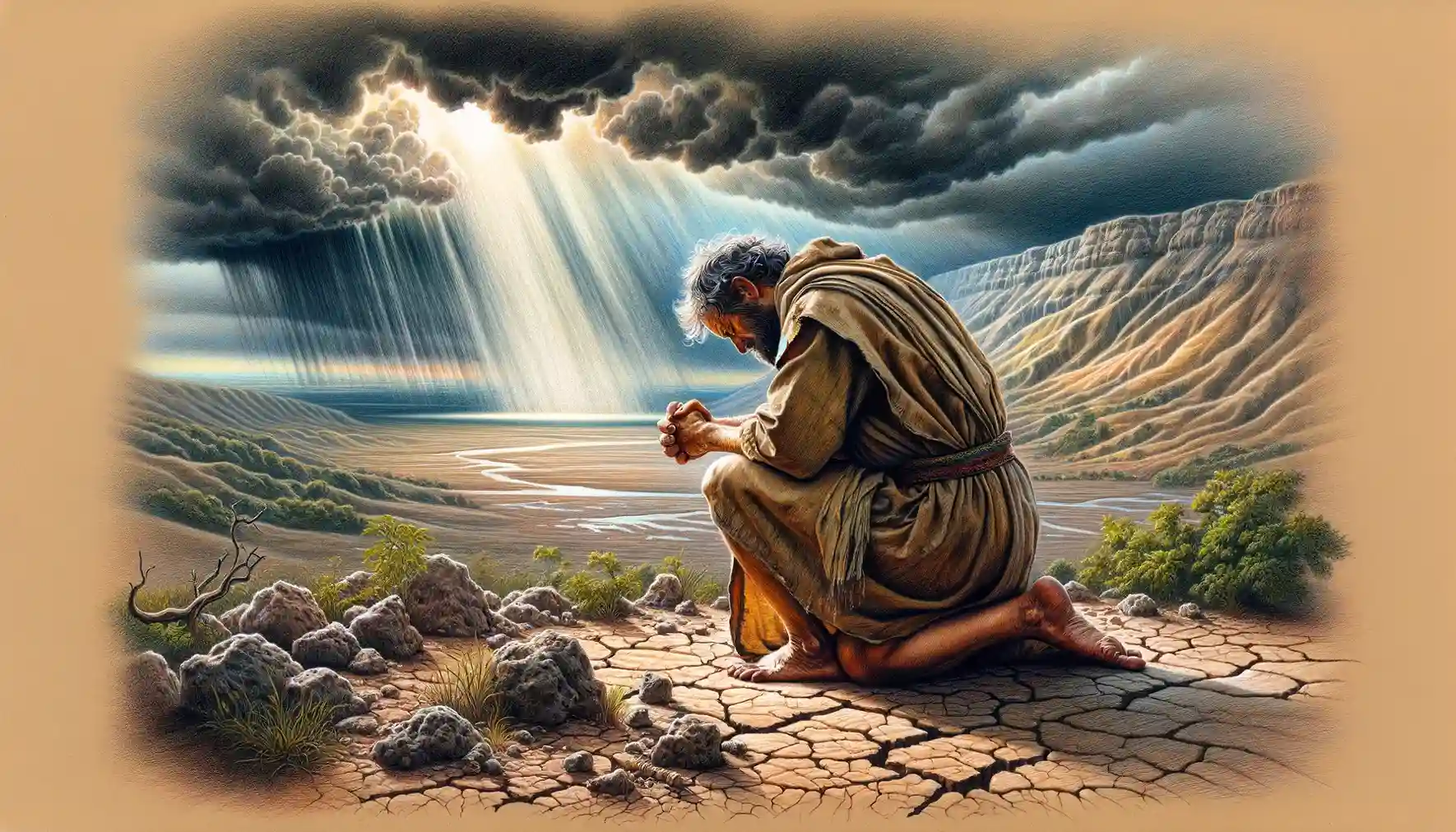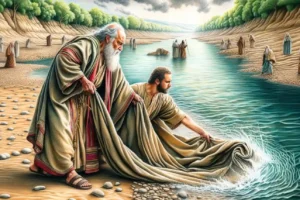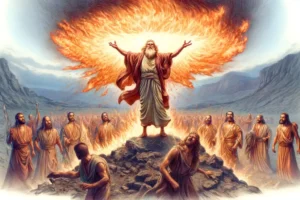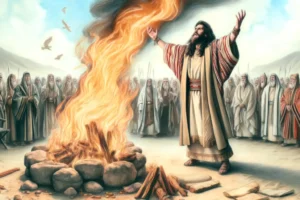
Bringing Rain After Drought by Elijah
The story of Elijah praying for rain after a prolonged drought is a compelling narrative from the Old Testament, found in 1 Kings 18:41-45. Here are some quick facts about this event:
- Biblical Reference: The account is located in the Book of 1 Kings, specifically in chapter 18, verses 41 to 45.
- Historical Context: This event occurs after the dramatic confrontation between Elijah and the prophets of Baal on Mount Carmel, where Elijah demonstrates the power of God over the Canaanite deity Baal.
- The Drought: The drought had lasted for three years and was a direct result of Elijah’s earlier prayer that it would not rain, as a divine judgment against the idolatry promoted by King Ahab and Queen Jezebel.
- Elijah’s Prayer for Rain: After the victory at Mount Carmel, Elijah climbs to the top of the mountain, kneels on the ground, puts his face between his knees, and prays earnestly for rain, signifying his deep humility and dependence on God.
- The Servant’s Role: Elijah sends his servant seven times to look toward the sea for any sign of rain, demonstrating persistence in prayer and expectation of God’s response.
- The Small Cloud: On the seventh look, the servant reports a small cloud rising from the sea, about the size of a man’s hand. This small sign is the precursor to a heavy rain, symbolizing that even small indications of God’s intervention can lead to significant outcomes.
- The Resulting Rain: The small cloud rapidly grows, leading to a heavy rain that ends the drought, symbolizing the restoration of God’s blessing upon Israel after a period of judgment.
The narrative of Elijah praying for rain after a three-year drought, as described in 1 Kings 18:41-45, is rich with theological and symbolic meaning. This event follows the dramatic showdown between Elijah and the prophets of Baal on Mount Carmel, serving as a powerful demonstration of God’s sovereignty over nature and His responsiveness to the faithfulness of His people. Here’s a comprehensive analysis of this passage:
Context and Setting
The story is set during the reign of King Ahab, a time marked by significant apostasy in Israel. Under Ahab and his wife Jezebel, the worship of Baal, a Canaanite god associated with weather and fertility, had become widespread. The drought was initially pronounced by Elijah as a divine judgment against Israel’s idolatry (1 Kings 17:1), symbolizing the absence of God’s blessing and the impotence of Baal.
Symbolism of the Drought
The drought itself symbolizes divine displeasure and serves as a punitive measure against Israel’s abandonment of Yahweh for Baal, who was ironically considered a rain and fertility god. The lack of rain for three years was a direct challenge to Baal’s supposed authority, underscoring the impotence of the idols worshipped by the Israelites compared to the power of the true God.
Elijah’s Actions
After the victory at Mount Carmel, where God demonstrated His power by consuming Elijah’s water-soaked sacrifice with fire, Elijah’s actions shift from public confrontation to private intercession. He ascends to the peak of Carmel, assumes a posture of humility and earnest supplication by putting his face between his knees—a posture reflecting deep concentration and earnestness in prayer. This act is a poignant representation of fervent prayer in contrast to the earlier dramatic display of God’s power.
The Role of the Servant
Elijah sends his servant to look toward the sea for signs of rain, which he does seven times. This number often symbolizes completeness or perfection in the biblical text, suggesting that Elijah’s persistence in prayer was comprehensive and complete. Each time the servant returns with no news, Elijah remains undeterred, embodying faith and perseverance.
The Small Cloud
The emergence of a small cloud symbolizes the beginnings of God’s response. The size of the cloud (“like a man’s hand”) emphasizes that the manifestations of God’s answers to prayer may start small but can lead to great things. This small sign rapidly develops into a heavy rain, illustrating how divine responses can escalate quickly and powerfully.
Theological Implications
This passage has several key theological themes:
- God’s Sovereignty: It reaffirms God’s control over natural elements, challenging any idolatrous attributions to Baal and reinforcing Yahweh’s supremacy.
- The Power of Prayer: Elijah’s prayer and its dramatic answer highlight the efficacy of prayer, showing that it can influence the course of natural events.
- Repentance and Restoration: The rain signifies the potential for restoration with God’s blessing following true repentance, as the drought ends symbolically washing away the period of national apostasy.
Conclusion
The account of Elijah praying for rain is not merely a historical recount of a miraculous event but a deeply symbolic narrative that reinforces themes of repentance, divine judgment, and restoration. It serves as a testament to the power of faithful prayer and offers a vivid illustration of God’s mastery over all creation, His readiness to forgive, and His willingness to restore those who turn back to Him in obedience. This story resonates with the continuous call for spiritual fidelity and reliance on God’s power rather than human or idolatrous substitutes.
Leave A Reply
You must be logged in to post a comment.




1 Comment